Effective Customer Engagement Programs for Retail

In today’s retail world, connecting with customers goes beyond just selling products. Effective customer engagement in retail creates meaningful interactions that make shoppers feel valued and understood. These programs are key to driving loyalty, satisfaction, and revenue. For example, loyalty program members typically spend 12-18% more annually than non-members, proving how engagement directly impacts growth.
Data-driven personalization adds even more value. Businesses using it report a 20% increase in sales on average. Tools like Sobot make this process seamless. By unifying all customer communication channels, Sobot helps retailers deliver personalized, real-time support that builds trust and keeps customers coming back.
What Is Customer Engagement in Retail?
Defining Customer Engagement in Retail
Customer engagement in retail is all about creating meaningful interactions between you and your customers. It’s not just about selling products anymore; it’s about building relationships that make shoppers feel valued. When you engage customers effectively, you’re shaping how they perceive your brand and encouraging them to stick around for the long haul.
Think of it as a two-way street. You’re not just talking to your customers; you’re listening to them too. By understanding their needs, preferences, and pain points, you can deliver experiences that resonate. For example, rising inflation has shifted consumer behavior, making it more important than ever to adapt your strategies. Hybrid engagement practices—like blending online and in-store experiences—are now essential for retaining loyal customers.
Metrics like store dwell time, engage time, and conversion rates help you measure how well you’re connecting with your audience. Here’s a quick snapshot:
| Metric | Description |
|---|---|
| Store Dwell Time | Duration of entry-to-exit store visits; correlates length of stay with sales. |
| Zone Stay Time | Duration of staying inside a virtual zone; evaluates in-store customer behaviors. |
| Engage Time | Duration of interaction with a product or display; requires accurate tracking for detailed insights. |
| Conversion Rates | Measures how people respond to a call to action; indicates effectiveness of marketing efforts. |
When you focus on these metrics, you’re not just tracking numbers—you’re gaining insights into how to improve your customer engagement in retail.
The Role of Customer Engagement in Retail Success
Customer engagement isn’t just a buzzword; it’s a game-changer for your business. Engaged customers are more likely to buy, return, and recommend your brand to others. That’s why it’s so important to make every interaction count.
Let’s break it down with some key performance indicators (KPIs):
| KPI Metric | Description |
|---|---|
| Product Return Rate | Measures the ratio of products sold versus returned, indicating customer satisfaction and potential churn. |
| Net Promoter Score | Quantifies customer satisfaction and loyalty, reflecting the likelihood of referrals to new customers. |
| Loyal Customer Rate | Indicates the percentage of repeat customers, showcasing brand loyalty and potential for repeat sales. |
| Customer Lifetime Value | Total revenue from a customer over their relationship with the company, highlighting retention benefits. |
These KPIs show how customer engagement drives success. For instance, a high Net Promoter Score means your customers are happy and willing to spread the word about your brand. Loyal customers, on the other hand, are the backbone of your business—they keep coming back and contribute to steady revenue growth.
Engagement also shapes your brand’s reputation. When you prioritize customer needs and deliver personalized experiences, you’re building trust. Tools like Sobot Live Chat make this easier by unifying communication channels and helping you provide real-time support. This kind of seamless interaction fosters loyalty and keeps customers coming back.
Real-World Examples of Customer Engagement in Retail
Let’s look at how customer engagement strategies have transformed businesses:
- Chupi: This jewelry brand introduced virtual consultations, allowing customers to connect with experts online. The result? A 65% conversion rate for consultations.
- Michael Kors: By using Sobot’s solutions, the luxury fashion brand reduced response times by 83% and achieved a 95% customer satisfaction rate. Their integration of WhatsApp API boosted marketing efforts, leading to a 20% increase in conversion rates.
- Industry Stats: Engaged customers drive revenue growth across sectors. Consumer electronics saw a 44% increase, hospitality experienced 46%, and banking achieved 37%.
Personalized experiences also play a huge role. Did you know that 66% of consumers will leave a brand if their experience isn’t tailored to them? On the flip side, 86% say personalization increases their loyalty.
These examples show how customer engagement in retail isn’t just about selling—it’s about creating experiences that customers remember. Whether it’s through virtual consultations, omnichannel support, or personalized messaging, the impact is undeniable.
Key Components of Effective Customer Engagement Programs
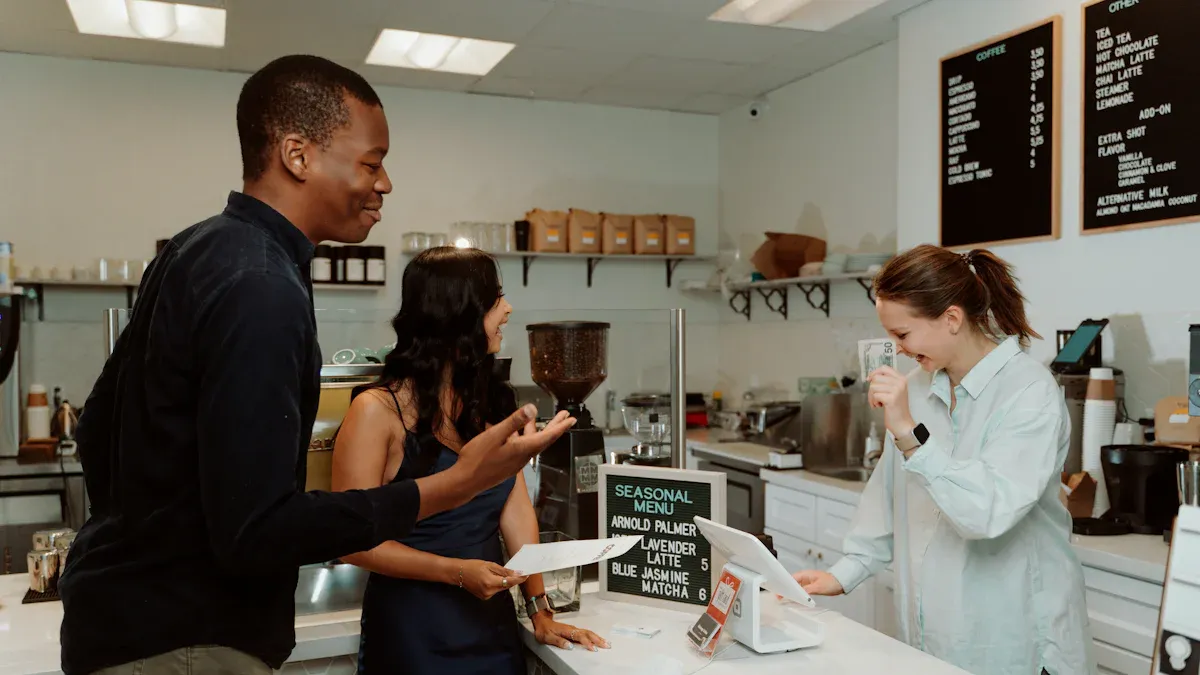
Understanding Customer Needs and Preferences
To truly engage your customers, you need to understand what makes them tick. This means diving into their preferences, behaviors, and expectations. Did you know that nurturing long-term relationships can lead to a 67% increase in spending compared to new customers? That’s why focusing on your existing audience is so powerful.
Start by gathering insights from customer interactions. Tools like Sobot Live Chat can help you track conversations across multiple channels, giving you a clearer picture of what your customers want. For example, if you notice frequent questions about a specific product, it might be time to highlight it in your marketing campaigns.
Here’s a quick look at how understanding customer needs impacts engagement:
| Statistic | Implication |
|---|---|
| 67% increase in spending by current customers compared to newcomers | Long-term relationships drive higher revenue. |
| 40% of consumers purchase more from personalized experiences | Personalization boosts sales. |
| 86% of customers willing to pay more for great experiences | Exceptional experiences lead to higher spending. |
By listening to your customers and acting on their feedback, you’re not just meeting their needs—you’re exceeding their expectations.
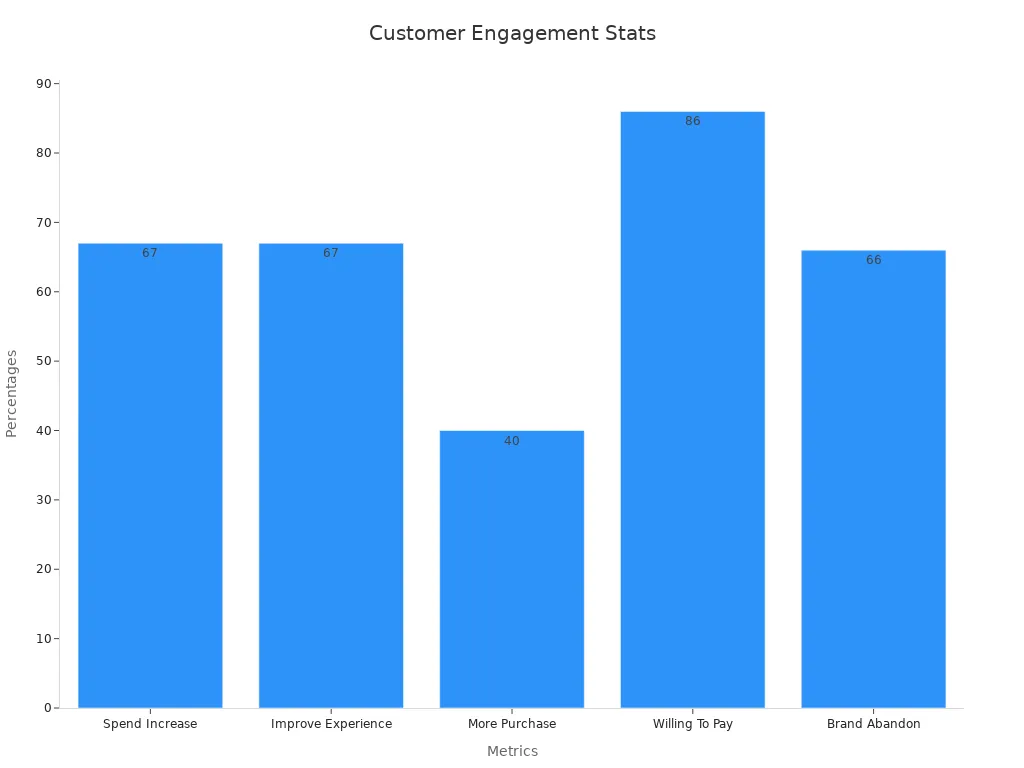
Personalization and Tailored Experiences
Personalization is no longer optional—it’s essential. Customers expect brands to know their preferences and deliver experiences that feel uniquely theirs. In fact, 80% of consumers are more likely to make a purchase when brands offer personalized experiences.
AI-powered tools like Sobot Live Chat make this easier than ever. By analyzing customer data, you can offer tailored recommendations, exclusive discounts, or even personalized greetings. For instance, a customer browsing winter coats might appreciate a pop-up suggesting matching scarves or gloves.
Here’s why personalization matters:
- 56% of consumers are more likely to make repeat purchases from brands offering personalized experiences.
- 48% have left a website for a competitor due to poorly curated experiences.
When you prioritize personalization, you’re not just increasing sales—you’re building loyalty. Customers who feel understood are more likely to return, recommend your brand, and stick around for the long haul.
Building Trust Through Consistent Interactions
Trust is the foundation of any strong relationship, and it’s no different in retail. Consistency in your interactions builds credibility and fosters loyalty. Research shows that 90% of highly satisfied customers are likely to return and recommend your brand.
Consistency means delivering the same high-quality experience across all touchpoints. Whether it’s through your website, social media, or in-store interactions, your message and service should align. Sobot’s omnichannel solutions make this seamless by unifying communication channels, ensuring your customers receive the same level of care no matter where they engage with you.
Positive and consistent experiences also lead to higher satisfaction. When customers know they can rely on you, they’re more likely to trust your brand. And trust isn’t just about keeping customers—it’s about turning them into advocates who spread the word about your business.
Tip: Regularly review your customer engagement strategies to ensure consistency. Small tweaks can make a big difference in how your brand is perceived.
Leveraging Tools Like Sobot Live Chat for Seamless Engagement
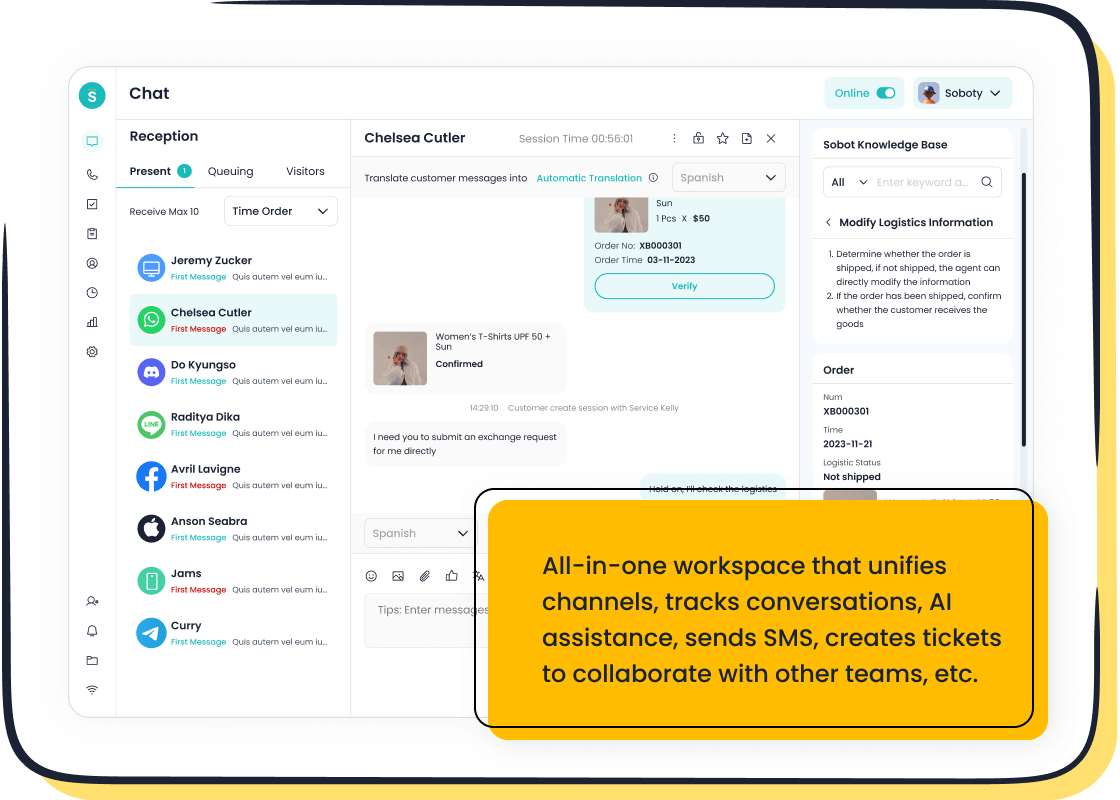
When it comes to customer engagement in retail, speed and personalization are everything. Shoppers expect quick responses and tailored experiences, whether they’re browsing online or visiting your store. That’s where tools like Sobot Live Chat come in. This platform helps you connect with customers instantly, no matter where they are, and ensures every interaction feels personal.
Imagine this: A customer visits your website to check out your latest collection. They have a question about sizing but don’t want to wait hours for an email reply. With Sobot Live Chat, your team can respond in seconds. The platform supports multiple channels—like WhatsApp, Instagram, and Telegram—so you’re always available on their preferred platform. This kind of accessibility builds trust and keeps customers coming back.
Here’s why Sobot Live Chat is a game-changer for retail:
- Omnichannel Support: Engage with customers across websites, apps, and social media without missing a beat.
- AI-Powered Assistance: Use AI tools to analyze customer behavior and offer personalized recommendations.
- Built-In Analytics: Track over 150 metrics to understand what’s working and where you can improve.
💡 Did you know? Businesses using live chat see a 38% boost in conversion rates. That’s because real-time support turns curious visitors into loyal customers.
Sobot Live Chat also simplifies your team’s workflow. Its unified workspace keeps all conversations in one place, making it easier for agents to provide consistent, high-quality service. Plus, features like auto-translation and satisfaction surveys ensure you’re meeting customer needs, no matter where they’re from.
If you’re serious about improving customer engagement in retail, Sobot Live Chat is a tool you can’t afford to overlook. It’s not just about answering questions—it’s about creating experiences that leave a lasting impression.
Step-by-Step Guide to Implementing Customer Engagement Programs
Mapping the Customer Journey
Understanding your customer journey is the first step to creating a successful engagement strategy. It’s about visualizing how customers interact with your brand, from the moment they discover you to when they make a purchase—and beyond. This map helps you identify pain points and opportunities to improve their experience.
Here’s why mapping the customer journey matters:
- It reveals emotional highs and lows, helping you connect with customers on a deeper level.
- It combines behavioral data with emotional insights, strengthening loyalty.
- It enables data-driven decisions that enhance customer engagement and satisfaction.
For example, imagine a customer browsing your website. They find your product page confusing and leave without buying. By mapping their journey, you can pinpoint this issue and redesign the page for clarity. Tools like Sobot Live Chat can help you gather real-time feedback during these interactions, ensuring you address problems quickly.
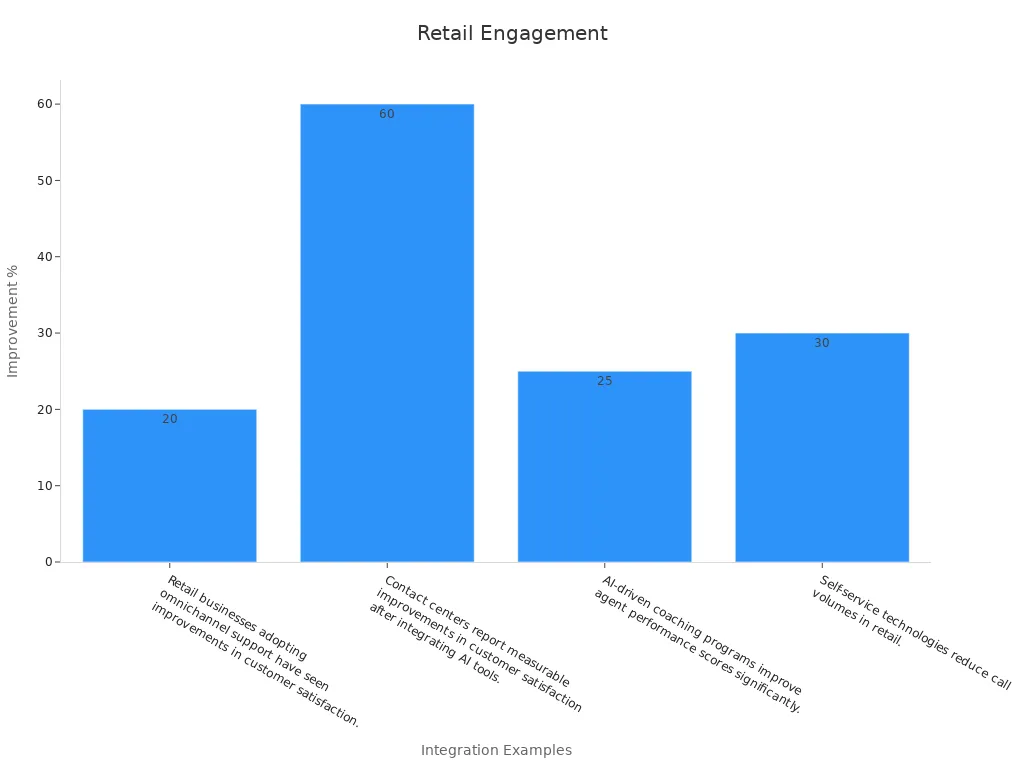
Tip: Use customer journey mapping to visualize every touchpoint. This helps you create smoother transitions and better experiences across channels.
Developing a Personalization Strategy
Personalization is the heart of any effective engagement strategy. Customers want to feel like you understand them, and delivering tailored experiences is the best way to achieve that. In fact, 69% of companies that prioritize personalization see better results.
Here’s how you can develop a winning personalization strategy:
- Collect customer data from interactions across channels.
- Segment your audience based on preferences and behaviors.
- Use AI-powered tools like Sobot Live Chat to analyze data and offer personalized recommendations.
For instance, if a customer frequently buys skincare products, you can send them exclusive discounts on new arrivals. Or, if they browse winter coats, suggest matching accessories like scarves or gloves.
| Statistic | Percentage |
|---|---|
| Companies prioritizing personalization | 69% |
| Targeted landing pages | 42% |
| Email message personalization | 42% |
| Web content personalization | 40% |
| Triggered email campaigns | 40% |
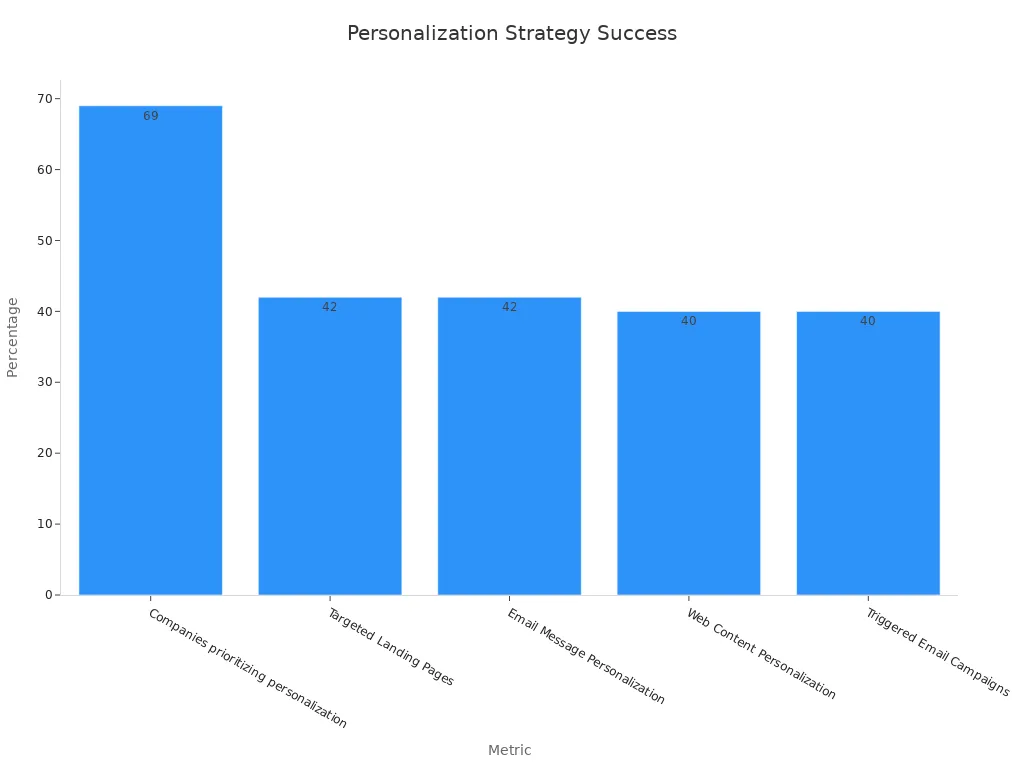
Personalization isn’t just about boosting sales—it’s about building trust. When customers feel valued, they’re more likely to stick around and recommend your brand to others.
Note: Fast response times and consistent messaging are key to successful personalization. Tools like Sobot Live Chat ensure you deliver both, keeping customers happy and engaged.
Integrating Technology and Tools (e.g., Sobot Live Chat, CRM)
Technology is the backbone of modern customer engagement programs. Integrating tools like Sobot Live Chat and CRM systems streamlines your operations and improves customer satisfaction.
Here’s how technology can transform your engagement strategy:
- Omnichannel Support: Platforms like Sobot Live Chat let you connect with customers across websites, apps, and social media. This ensures you’re always available on their preferred channel.
- AI-Powered Insights: AI tools analyze customer behavior, helping you offer personalized recommendations and faster responses.
- CRM Integration: Combining live chat with CRM systems gives your team access to detailed customer profiles, enabling more meaningful interactions.
| Evidence Description | Improvement Percentage |
|---|---|
| Retail businesses adopting omnichannel support have seen improvements in customer satisfaction. | 20% |
| Contact centers report measurable improvements in customer satisfaction after integrating AI tools. | 60% |
| AI-driven coaching programs improve agent performance scores significantly. | 25% |
| Self-service technologies reduce call volumes in retail. | 30% |
For example, Michael Kors used Sobot’s solutions to unify customer reception channels and integrate CRM systems. This led to an 83% reduction in response times and a 95% customer satisfaction rate. By leveraging WhatsApp API, they also boosted marketing efforts, achieving a 20% increase in conversion rates.
Tip: Start small by integrating one tool at a time. Gradually expand your tech stack to include AI, CRM, and analytics for maximum impact.
Training Teams for Exceptional Customer Service
Your team plays a crucial role in delivering exceptional customer engagement. Well-trained employees not only resolve issues faster but also create memorable experiences that keep customers coming back. To achieve this, you need to focus on building their skills, boosting their confidence, and equipping them with the right tools.
Start by identifying key training metrics that align with your goals. For example, tracking resolution rates and customer effort scores (CES) can help you measure how well your team is performing. Here’s a quick breakdown of important metrics:
| Metric | Description | Impact on Engagement |
|---|---|---|
| Resolution Rate | Percentage of customer issues resolved on the first contact. | High rates correlate with improved customer loyalty. |
| Customer Effort Score (CES) | Measures how easy it is for customers to achieve their goals. | Low effort experiences lead to higher customer retention. |
| Average Handle Time (AHT) | Average time taken to resolve customer issues. | Shorter times enhance customer satisfaction. |
| Customer Retention Rate (CRR) | Percentage of customers who continue to do business over time. | Higher retention rates indicate effective service. |
Training should focus on reducing customer effort. Research from Gartner shows that customers who experience low-effort interactions are more likely to repurchase and recommend your brand. On the other hand, high-effort experiences can drive them away. By teaching your team to simplify processes and communicate clearly, you’ll create a smoother journey for your customers.
Tools like Sobot Live Chat can make training more effective. Its unified workspace allows agents to manage conversations across multiple channels, helping them stay organized and efficient. Features like AI-powered suggestions and built-in analytics also provide real-time insights, enabling your team to make data-driven decisions. When your employees feel empowered, they’re more likely to deliver the kind of service that builds trust and loyalty.
Tip: Regularly update your training programs to reflect changing customer needs. This ensures your team stays ahead of trends and continues to provide top-notch service.
Launching, Monitoring, and Iterating Your Program
Once your customer engagement program is ready, it’s time to launch. But remember, this isn’t a one-and-done process. Successful programs require constant monitoring and iteration to stay effective.
Start by setting clear objectives. What do you want to achieve? Whether it’s increasing customer retention or boosting satisfaction scores, having specific goals will guide your efforts. Use tools like Sobot Live Chat to track key metrics such as response times, resolution rates, and customer feedback. These insights will help you identify what’s working and what needs improvement.
Monitoring your program involves more than just looking at numbers. Pay attention to customer behavior and feedback. For instance, if you notice a drop in engagement on a particular channel, it might be time to rethink your strategy. Sobot’s built-in analytics can evaluate over 150 indicators, giving you a comprehensive view of your performance.
Iteration is where the magic happens. Use the data you’ve gathered to make informed changes. For example, if customers frequently ask the same questions, consider updating your FAQ section or training your team to address these queries more effectively. Small adjustments can lead to significant improvements in customer engagement.
Note: Don’t be afraid to experiment. Testing new approaches, like introducing loyalty programs or gamification techniques, can help you discover what resonates most with your audience.
Launching, monitoring, and iterating your program ensures it remains relevant and impactful. By staying proactive and adaptable, you’ll not only meet customer expectations but also exceed them.
Actionable Tips to Enhance Customer Engagement in Retail

Implementing Omnichannel Strategies
Omnichannel strategies help you connect with customers wherever they are—online, in-store, or on social media. To make this work, you need to ensure all your channels complement each other instead of operating separately. For example, your website should be responsive across devices, making it easy for customers to browse and shop.
Here’s how you can implement omnichannel strategies effectively:
- Avoid treating each channel as a standalone entity. Instead, create a seamless experience across platforms.
- Use tools like Google Dashboards to visualize customer data and track interactions.
- Segment your audience to tailor your marketing efforts.
- Maintain consistent branding across all channels to strengthen your identity.
- Map the customer journey to understand how customers interact with your brand online and offline.
Sobot Live Chat can simplify this process by unifying communication channels. Whether your customers reach out via WhatsApp, Instagram, or your website, Sobot ensures they receive consistent, high-quality service. This kind of integration builds trust and keeps them engaged.
Tip: Set clear objectives for your omnichannel campaigns. Knowing your goals will guide your strategy and help you measure success.
Using Conversational AI for Real-Time Support
Customers expect quick answers, and conversational AI delivers just that. AI-powered tools like Sobot Live Chat analyze customer behavior and provide instant responses, making interactions smoother and more personalized.
Businesses using AI-based virtual agents report a 12% increase in customer satisfaction. Plus, 63% of retailers already use AI to enhance customer interactions. This technology doesn’t just save time—it also improves the overall experience.
Here’s why conversational AI is a must-have:
- It offers real-time support, reducing wait times and frustration.
- AI tools can suggest personalized solutions based on customer queries.
- Retailers using AI often allocate teams and budgets specifically for this technology, showing its importance.
Imagine a customer browsing your store late at night. They have questions about a product but can’t reach a human agent. Conversational AI steps in, providing instant answers and keeping them engaged. With Sobot’s AI-powered tools, you can offer this level of support effortlessly, ensuring no customer feels ignored.
Did you know? Businesses using conversational AI see higher satisfaction rates and improved retention.
Encouraging Feedback and Acting on Insights
Feedback is a goldmine for improving customer engagement. When you actively seek customer opinions and act on them, you show that you value their input. This builds trust and loyalty, which are essential for long-term success.
| Benefit | Description |
|---|---|
| Improved Offering | Feedback provides insights into customer needs, enhancing loyalty when acted upon. |
| Adaptive to Needs | Personalization increases brand loyalty by making customers feel valued through tailored offerings. |
| Customer Experience | Understanding the customer journey through feedback helps enhance overall experience. |
| Building Trust and Credibility | Actively seeking feedback demonstrates commitment to customer satisfaction, fostering trust. |
| Retention and Repeat Business | Feedback-driven improvements lead to higher customer satisfaction and loyalty, driving profitability. |
Customer surveys are a great way to gather insights. They help you identify pain points and improve your products or services over time. For example, if customers frequently mention issues with delivery times, you can adjust your logistics to meet their expectations.
Sobot Live Chat makes collecting feedback easy. Its satisfaction surveys let you measure service quality and pinpoint areas for improvement. By acting on this data, you can enhance your offerings and create a better experience for your customers.
Tip: Don’t just collect feedback—use it. Customers appreciate when their opinions lead to real changes.
Creating Loyalty Programs and Gamification Techniques
Loyalty programs and gamification techniques are powerful tools for boosting customer engagement in retail. They don’t just encourage repeat purchases—they make shopping fun and rewarding. When done right, these strategies can turn casual shoppers into loyal fans.
Why Loyalty Programs Work
Loyalty programs reward customers for sticking with your brand. They can include points systems, exclusive discounts, or early access to sales. For example, Starbucks Rewards lets customers earn stars for every purchase, which they can redeem for free drinks. This approach keeps customers coming back for more.
Here’s a quick stat: 75% of consumers say they’re more likely to stick with a brand that offers a loyalty program. And loyal customers spend 67% more than new ones. That’s a win-win for both you and your shoppers.
Tip: Use tools like Sobot Live Chat to promote your loyalty program. You can send personalized messages about rewards or remind customers to redeem their points.
Gamification: Making Shopping Fun
Gamification adds an element of play to the shopping experience. Think of it as turning everyday tasks into a game. For instance, Sephora’s Beauty Insider program uses tiers and badges to motivate customers to spend more and unlock higher rewards.
Here’s how you can gamify your customer engagement:
- Challenges: Offer rewards for completing specific actions, like writing a review or referring a friend.
- Leaderboards: Show customers how they rank compared to others.
- Surprise Rewards: Delight customers with unexpected perks for their loyalty.
Sobot’s marketing solutions can help you track customer interactions and tailor gamified experiences. For example, you can use its analytics to identify top spenders and reward them with exclusive offers.
Did you know? Gamification can increase customer engagement by up to 47%, according to a study by eMarketer.
By combining loyalty programs with gamification, you create a shopping experience that’s both rewarding and enjoyable. These strategies not only boost sales but also strengthen your relationship with customers.
Measuring the Success of Customer Engagement Programs
Key Metrics for Evaluating Engagement (e.g., NPS, CLV)
Measuring customer engagement success starts with tracking the right metrics. These indicators help you understand how well your strategies are working and where you can improve. Here are some key metrics to focus on:
| Metric | Description |
|---|---|
| NPS (Net Promoter Score) | Measures customer loyalty and their likelihood to recommend your brand. |
| CLV (Customer Lifetime Value) | Projects the total revenue a customer will generate over their lifetime. |
| CSAT (Customer Satisfaction) | Gauges how happy customers are with your service or product. |
| CES (Customer Effort Score) | Assesses how easy it is for customers to interact with your business. |
| Retention Rate | Indicates the percentage of customers who stay with your brand over time. |
For example, a high NPS shows that your customers are satisfied and willing to promote your brand. Meanwhile, tracking CLV helps you focus on long-term revenue growth by nurturing valuable relationships. These metrics provide a clear picture of your engagement program’s effectiveness.
Using Data Insights to Refine Strategies
Data is your best friend when it comes to improving customer engagement. By analyzing customer behavior, you can identify what’s working and what needs adjustment. Here are some proven ways retailers use data insights:
- Customer Segmentation: Starbucks segments customers based on buying patterns to create targeted campaigns.
- Personalized Marketing: Nordstrom sends tailored emails based on browsing history, boosting engagement.
- In-Store Tracking: IKEA analyzes foot traffic to optimize store layouts, encouraging impulse purchases.
- AI Forecasting: H&M uses AI to predict demand, ensuring popular items are always in stock.
According to McKinsey & Co., optimized stock and store planning can increase sales by 10% and reduce inventory costs by 15%. Tools like Sobot Live Chat also provide built-in analytics, helping you track over 150 indicators to refine your strategies.
Tools for Monitoring Engagement, Including Sobot Live Chat
The right tools make all the difference in monitoring and improving customer engagement. Sobot Live Chat stands out as a powerful solution for tracking and enhancing interactions. Here’s how it helps:
| Metric | Improvement |
|---|---|
| Reduced inbound discussion volume | 20% |
| Customer satisfaction score (CSAT) | 97% |
| Problem resolution rate | 85% |
| Customer happiness | 99% |
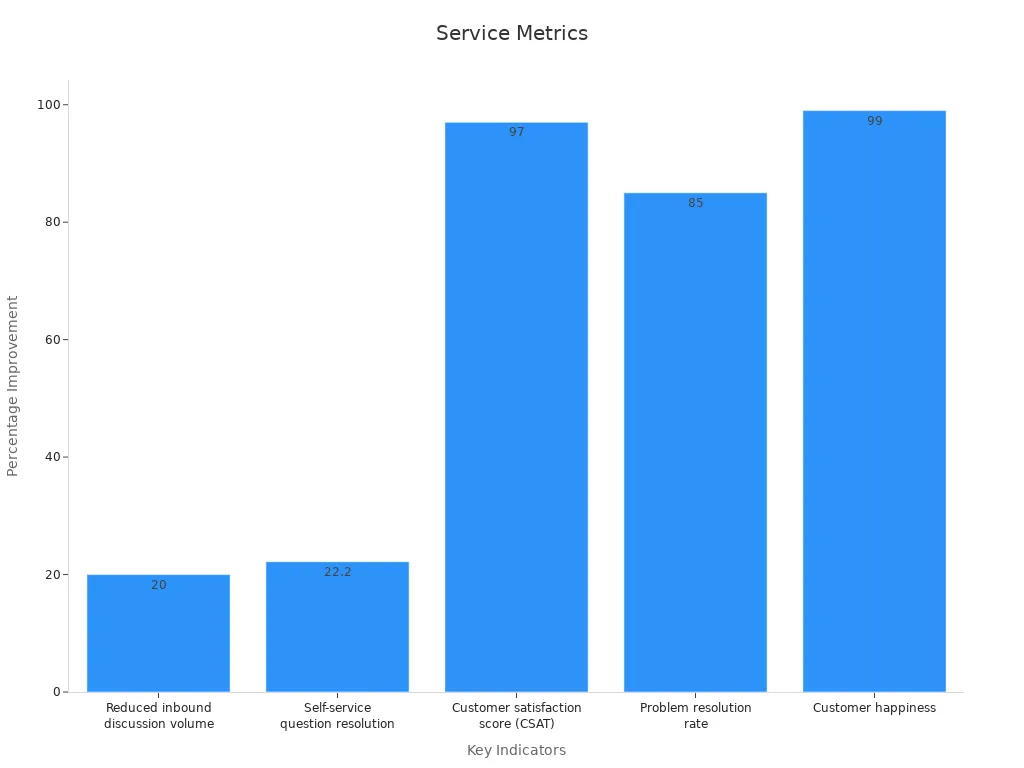
Sobot Live Chat unifies communication channels, making it easier to track customer interactions across platforms like WhatsApp and Instagram. Its AI-powered tools analyze customer behavior, offering actionable insights to improve satisfaction. With features like satisfaction surveys and real-time analytics, you can monitor engagement and make data-driven decisions effortlessly.
Tip: Regularly review your engagement metrics to ensure your strategies stay effective. Small tweaks can lead to big improvements in customer loyalty and satisfaction.
Customer engagement programs are the backbone of retail success. They help you build stronger relationships, boost loyalty, and drive revenue. Brands like Amazon, Walmart, and Sephora have proven this by using personalized experiences, seamless shopping journeys, and AI-powered tools to keep customers happy and engaged.
Tools like Sobot Live Chat make this process even easier. They unify communication channels, offer real-time support, and provide actionable insights to refine your strategies. By leveraging these solutions, you can create experiences that truly resonate with your audience.
Now’s the time to act. Start mapping your customer journey, personalize interactions, and integrate tools like Sobot Live Chat into your strategy. When you prioritize engagement, you’re not just improving sales—you’re building lasting connections that set your brand apart.
FAQ
How can customer engagement programs improve retail sales?
Customer engagement programs build loyalty and trust. Engaged customers spend 12-18% more annually. Tools like Sobot Live Chat help you deliver personalized experiences, boosting conversion rates by 38%. When customers feel valued, they’re more likely to return and recommend your brand.
What is the role of live chat in customer engagement?
Live chat offers instant support, making interactions seamless. Sobot Live Chat connects with customers across websites, apps, and social media. Its AI-powered tools analyze behavior and provide tailored recommendations, increasing satisfaction and driving sales. Businesses using live chat report higher retention rates.
Why is personalization important in retail?
Personalization makes customers feel understood. It increases loyalty, with 56% of shoppers making repeat purchases from brands offering tailored experiences. Sobot Live Chat uses AI to analyze preferences, helping you deliver personalized greetings, recommendations, and discounts that resonate with your audience.
How do you measure the success of customer engagement programs?
Track metrics like Net Promoter Score (NPS), Customer Lifetime Value (CLV), and Customer Satisfaction (CSAT). Sobot Live Chat provides built-in analytics to monitor over 150 indicators, helping you refine strategies and improve engagement. High NPS scores show happy customers who promote your brand.
Can Sobot Live Chat integrate with other tools?
Yes, Sobot Live Chat integrates with CRM systems and other platforms. This ensures seamless operations and access to detailed customer profiles. Integration improves service efficiency, helping you deliver consistent, high-quality interactions that build trust and loyalty.
See Also
Excelling at Live Chat Strategies for Retail Success
Selecting the Right Live Chat Solution for Retail
Enhancing Live Chat Effectiveness in Retail Businesses